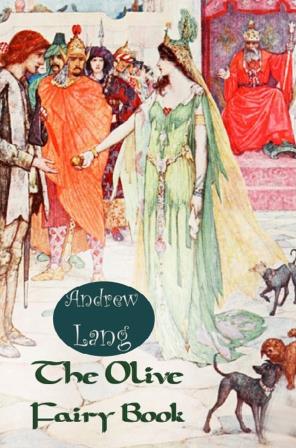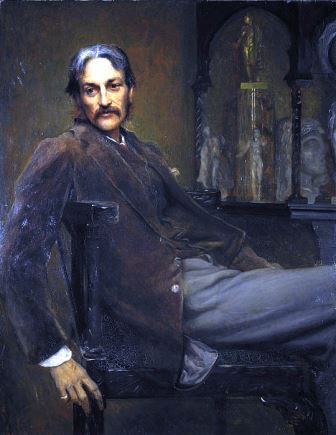The stories begin with those which children like best—the old Blue Beard, Puss in Boots, Hop o’ my Thumb, Little Red Riding Hood, The Sleeping Beauty, and Toads and Pearls. These were first collected, written, and printed at Paris in 1697.
The author was Monsieur Charles Perrault, a famous personage in a great perruque, who in his day wrote large volumes now unread. He never dreamed that he was to be remembered mainly by the shabby little volume with the tiny headpiece pictures—how unlike the fairy way of drawing by Mr. Ford, said to be known as ‘Over-the-wall Ford’ among authors who play cricket, because of the force with which he swipes!
Perrault picked up the rustic tales which the nurse of his little boy used to tell, and he told them again in his own courtly, witty way. They do not seem to have been translated into English until nearly thirty years later, when they were published in English, with the French on the opposite page, by a Mr. Pote, a bookseller at Eton. Probably the younger Eton boys learned as much French as they condescended to acquire from these fairy tales, which are certainly more amusing than the Telemaque of Messire François de Salignac de la Motte-Fénelon, tutor of the children of France, Archbishop Duke of Cambrai, and Prince of the Holy Roman Empire.
The success of Perrault was based on the pleasure which the court of Louis XIV. took in fairy tales; we know that they were told among Court ladies, from a letter of Madame de Sévigné. Naturally, Perrault had imitators, such as Madame d’Aulnoy, a wandering lady of more wit than reputation. To her we owe Beauty and the Beast and The Yellow Dwarf. Anthony Hamilton tried his hand with The Ram, a story too prolix and confused, best remembered for the remark, ‘Ram, my friend, begin at the beginning!’ Indeed, the narrative style of the Ram is lacking in lucidity!
Then came The Arabian Nights, translated by Monsieur Galland. Nobody has translated The Arabian Nights so well as Galland. His is the reverse of a scientific rendering, but it is as pleasantly readable as the Iliad and Odyssey would be if Alexandre Dumas had kept his promise to translate Homer. Galland omitted the verses and a great number of passages which nobody would miss, though the anthropologist is supposed to find them valuable and instructive in later scientific translations which do not amuse. Later, Persian Tales, Tales of the Sea, and original inventions, more or less on the fairy model, were composed by industrious men and women.
They are far too long—are novels, indeed, and would please no child or mature person of taste. All these were collected in the vast Fairy Cabinet, published in 1786, just before the Revolution. Probably their attempt to be simple charmed a society which was extremely artificial, talked about ‘the simple life’ and the ‘state of nature,’ and was on the eve of a revolution in which human nature revealed her most primitive traits in orgies of blood.

































